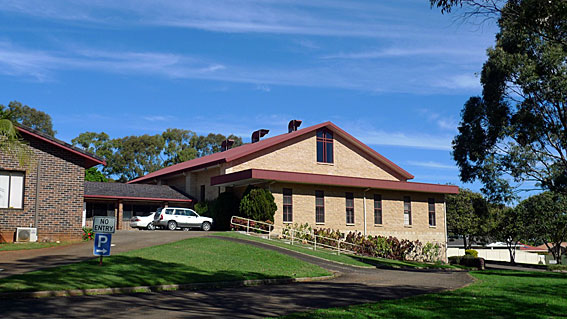
Port Macquarie Baptist Church: exterior
[photograph by Trevor Bunning (August 2010)]

Port Macquarie Baptist Church: exterior
[photograph by Trevor Bunning (August 2010)]
Historical and Technical Documentation by Kelvin Hastie
© OHTA, 2015 (last updated September 2015)
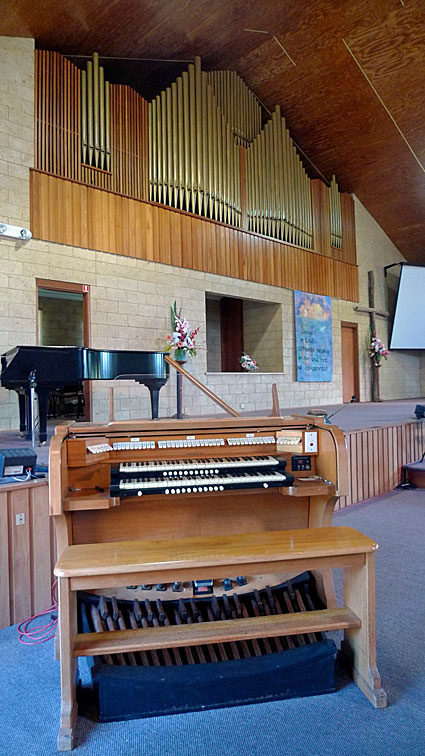
Port Macquarie Baptist Church: organ and console
[photograph by Trevor Bunning (August 2010)]
In 1962, the Port Macquarie Baptist Church was formed with 13 members. Originally they were a small group of Christians who met in a home, then as they grew; they began to meet in the CWA Hall receiving assistance from the Kempsey Baptist Church. They built an A-framed church in Gordon Street that was opened in 1964.1 The present modern Baptist Church complex in McIntyre Close replaced this former church building.
In 1993 Ron Mapstone installed and greatly expanded an organ he had installed in the previous church in 1974. This instrument, of 12 stops, had been built in 1904 by Charles Richardson for the Brown Street Congregational Church, Newcastle and electrified in 1969 by S.I. Sakacs of Melbourne. It was removed to Port Macquarie upon the closure of the Brown Street Church.2
Mapstone enlarged the Richardson organ for the present building by using material from a number of redundant organs in Sydney, notably those from the Baptist Churches at Earlwood and West Ryde.3 The console cabinet is clearly from an organ by J.P. Eagles, refitted to allow for the expanded specification. The Trumpet rank is from the 1881 Forster & Andrews organ (rebuilt in 1933 by Hill, Norman & Beard) formerly in the Great Hall of the University of Sydney. The pipes were reworked by Australian Pipe Organs of Melbourne. The solid state switching was provided by Christie Music Systems and the capture system by Brown & Arkley.4
Further investigation is required to determine the origin of each component and the manner in which the various ranks are borrowed or extended in the instrument. The current specification, as recorded by Trevor Bunning in 2010, is as follows:
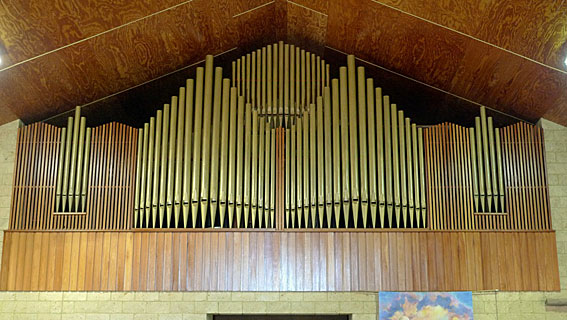
Port Macquarie Baptist Church: organ
[photograph by Trevor Bunning (August 2010)]
GREAT |
16 8 8 8 4 4 2-2/3 2 IV 16 8 4 8 8 8 8 4 4 4 2-2/3 2 1-3/5 II 16+ 8 8 32 16 16 16 16 8 8 4 4 2 16+ 8 4 |
Electric action
Compass 61/32
21 settable general thumb pistons
5 toe pistons
Balanced Swell pedal
+ Bottom octave not installed
1. http://monumentaustralia.org.au/themes/culture/religion/display/97938-port-macquarie-baptist-church-50th-anniversary. Accessed by Kelvin Hastie, 10 July 2015.
2. John Maidment, Gazetteer of New South Wales Pipe Organs. Melbourne: Society of Organists, Vic. Inc., 1981.
3. The Earlwood Baptist Church organ was built by Ron Mapstone, Eric Field and others between 1969 and 1972, using components from the Dirksen organ formerly in the Church of Jesus Christ of Latter Day Saints, Greenwich, the 1927 W.L. Roberts organ from Merewether Methodist Church and the 1928 T.C Edwards organ from Malvern Hill Methodist Church. The West Ryde Baptist Church organ was built in 1958 by J.P. Eagles.
4. Information provided by Ian Brown to Trevor Bunning, August 2010.
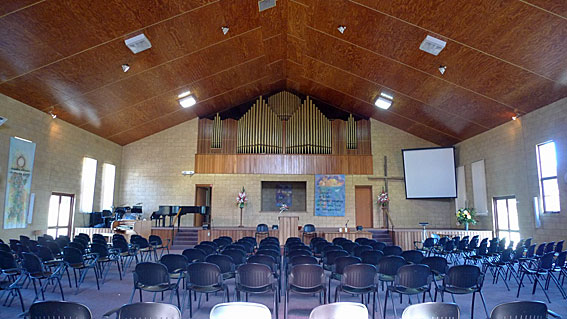
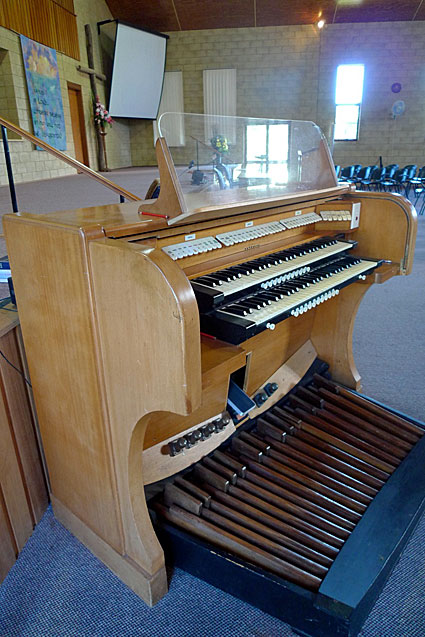
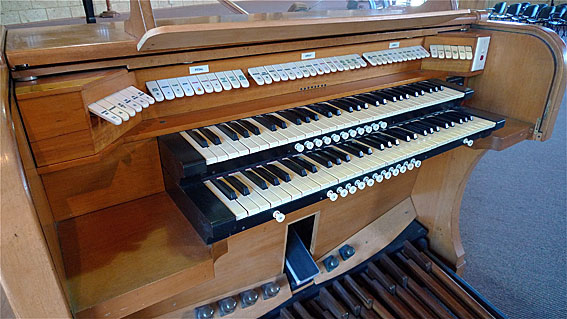
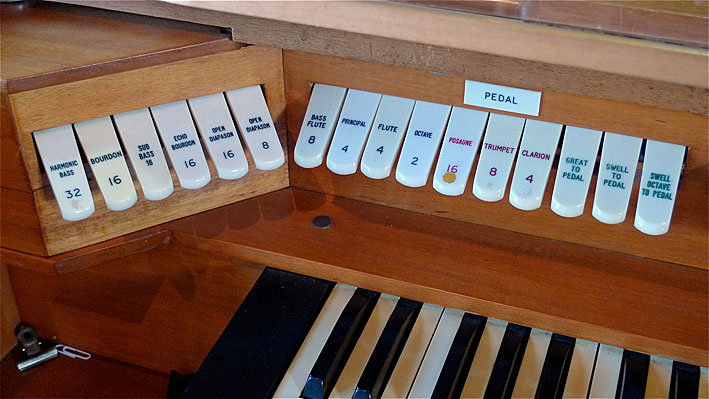
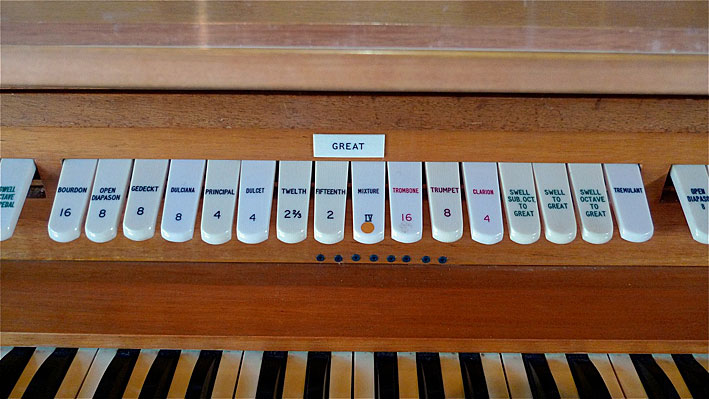
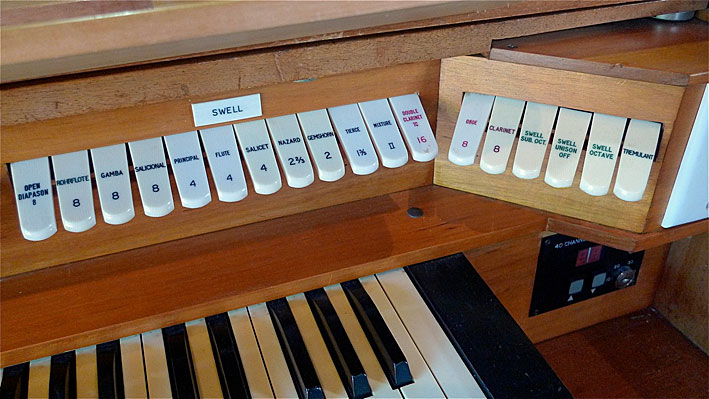
Port Macquarie Baptist Church: organ and console
[photographs by Trevor Bunning (August 2010)]